MXA RETRO TEST: WE RIDE TOMMY HAHN’S 2007 FACTORY HONDA CRF250
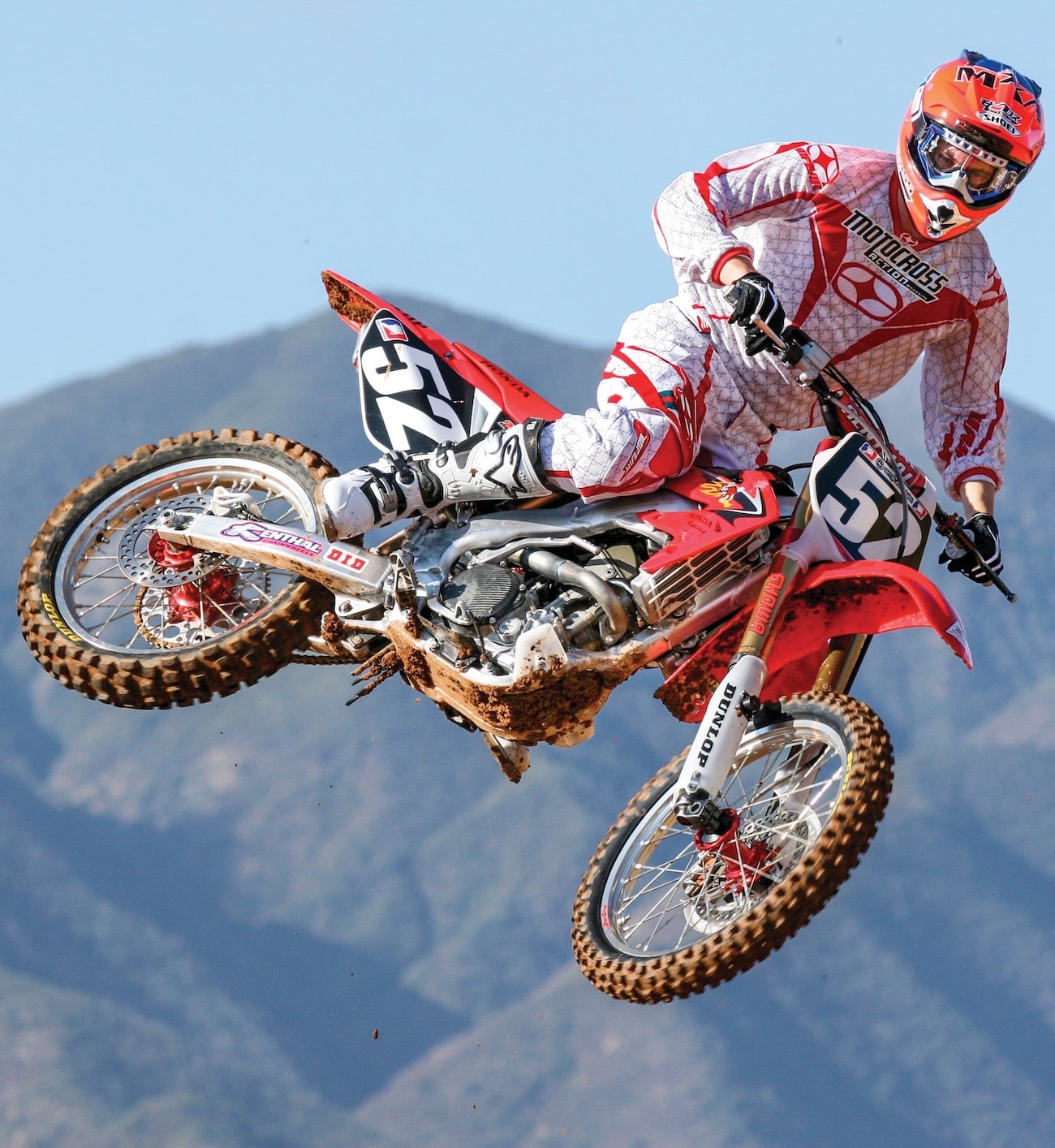 At just a shade over the AMA’s weight minimum, Tommy Hahn’s works CRF250 is light and flickable. We soar it through the Corona haze.
At just a shade over the AMA’s weight minimum, Tommy Hahn’s works CRF250 is light and flickable. We soar it through the Corona haze.
We get misty-eyed sometimes thinking about past bikes we loved and those that should remain forgotten. We take you on a trip down memory lane with bike tests that got filed away and disregarded in the MXA archives. We reminisce on a piece of moto history that has been resurrected. Here is our test of Tommy Hahn’s 2007 factory Honda CRF250.
There are certain crowning moments in every athlete’s life—moments that stand out as special, gratifying and wholesome. For fanatical baseball fans, it’s standing at home plate in Yankee Stadium. For car aficionados, it’s getting to do a lap around the Nurburgring. For an MXA test rider, there is no greater moment than riding a factory works bike.
Works bikes are the holy grail of motocross machinery. Loaded with unobtainium parts, gobs of power, hand-crafted knick-knacks and the most radical suspension imaginable, a factory bike is the real deal.
NO MATTER HOW MANY FACTORY BIKES THE MXA WRECKING CREW HAS TESTED, THE EXOTIC PARTS ALWAYS BLOW US AWAY.
And to be perfectly honest, what makes standing in the footprints of Babe Ruth, driving the same racecourse as Juan Manuel Fangio or riding a works bike so special is that it doesn’t happen to more than a handful of people. And, short of making it happen at gunpoint, the easiest way to get your hands on a works bike is to be an MXA test rider.
To be sensitive, we do feel your pain in that you were not chosen for the assignment. But even though MXA has tested more factory bikes than any other magazine, 99.9 percent of the time, we spend our days testing stock motorcycles. Under AMA rules, a works bike is supposed to be a stock bike on steroids. So, when Honda called to ask if we would like to test Tommy Hahn’s works CRF250, we agreed in a heartbeat.
Team Honda had a few stipulations: (1) We would have to test Tommy’s CRF250 on Honda’s private Supercross track in Corona, California. (2) We would have to share the bike with Tommy, who would be switching back and forth between his test mule and his race bike. (3) We had to be at the test track at eight in the morning.
Now, you may be wondering why Team Honda would be willing to hand over not just its factory works bike to MXA, but also its Supercross track in the middle of the 2007 AMA Supercross series. The answer is simple—because of injuries! Honda’s team riders (Tommy Hahn, Davi Millsaps and Andrew Short) had not been racing, and without any results or exposure, their three bikes were collecting dust. Honda wanted us to blow that dust off and tell the world how good their factory equipment truly is.
No matter how many factory bikes the MXA wrecking crew has tested, the exotic parts always blow us away. Team Honda put painstaking effort into Tommy Hahn’s works CRF250. No bolt was left unturned. Titanium was used generously, and a plethora of Honda works parts from Japan were spread throughout the bike. Here are some of the key parts on Hahn’s works CRF250.
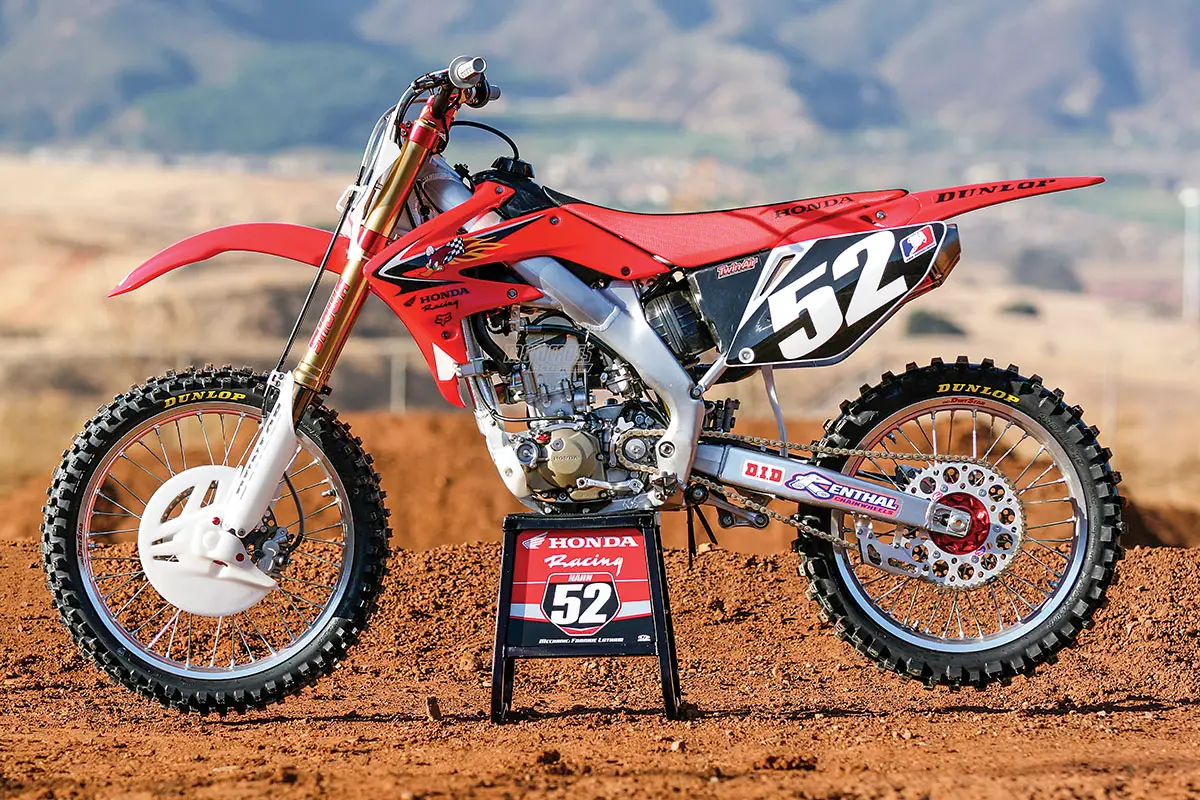
Engine. Although Honda was tight-lipped about what exactly was done to Hahn’s engine, Honda did reveal that the ignition mapping was perked up. The ignition did not come from the HRC parts warehouse but was a product of American Honda’s in-house race effort. Adding to Hahn’s engine package was a Yoshimura RS-2 Pro-99 carbon fiber exhaust system. Even when you add in head mods, one-off valves, stiffer valve spring, special valve seats, race cam and secret internal mods, the exterior of Hahn’s engine doesn’t look all that different from the stock CRF250 mill. But, the changes were noticeable when we rode the bike.
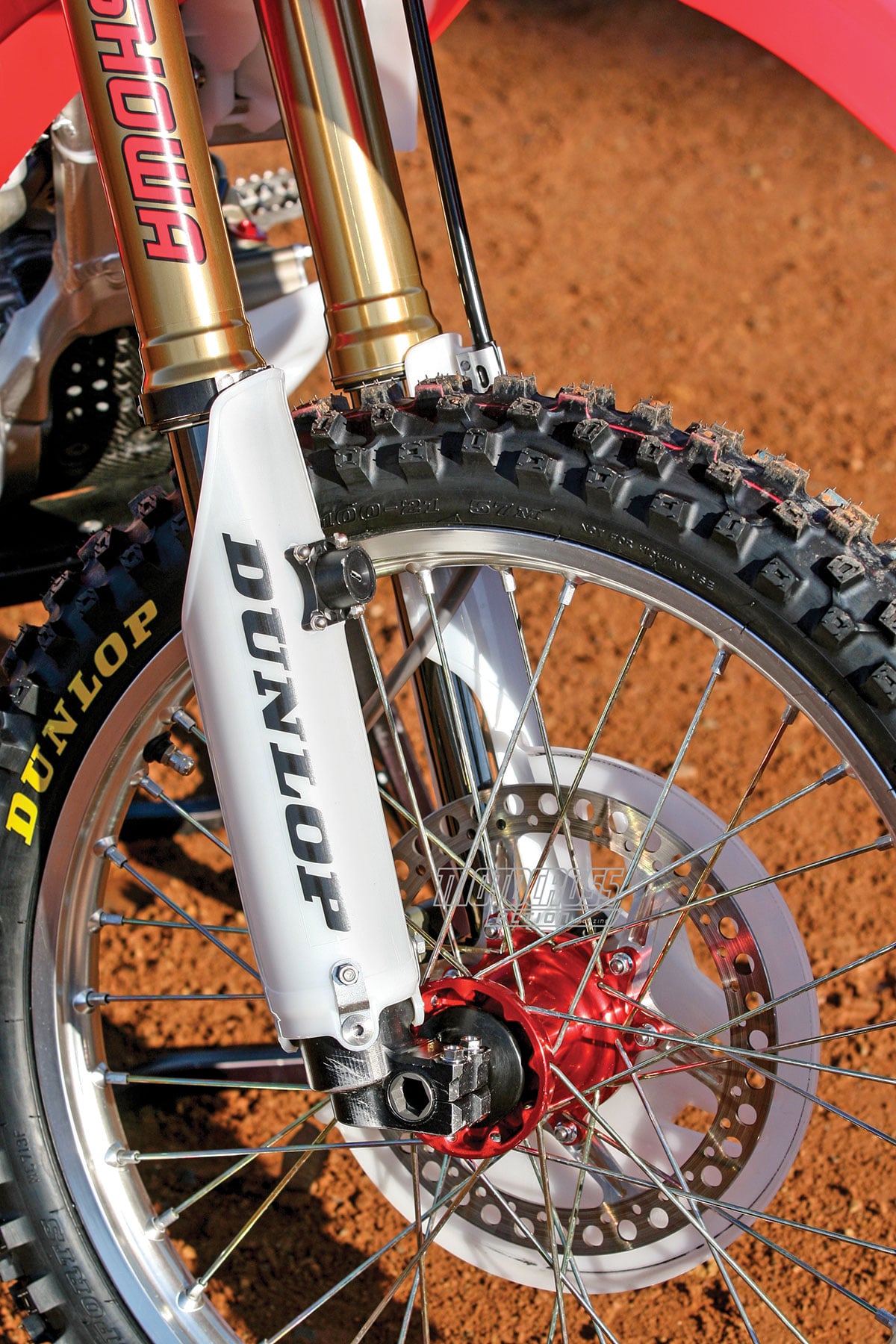
Suspension. Honda didn’t spare any expense with Hahn’s Showa suspension. The 49mm Showa works forks (the stocker comes with 47mm forks) were built oversized to decrease fork flex and improve steering response on tight Supercross tracks. As for the shock, it also received all the special Showa works treatments, including nitrate coatings, an oversize shock shaft and special valving. Hahn’s shock used an RCS titanium spring.
Because of AMA rules, Hahn’s Showa works suspension must be made available to the public. AMA rules require riders in the 250 East/West Supercross series to use readily available components (that must be shipped to a qualified buyer within 15 work days). Known as the Showa A-kit, it typically retails for around $6,000 for the forks and shock. Pro Circuit is the supplier of Showa works kits.
WE RODE TOMMY’S RACE BIKE WHILE HE PRACTICED ON HIS TEST BIKE. THEN, AFTER WE HAD WORN OURSELVES OUT AND GONE THROUGH TWO TANKS OF GAS, TOMMY TOOK HIS RACE BIKE OUT TO SHOW THE MXA WRECKING CREW HOW IT WAS REALLY DONE.
Renthal products. We have had great success with Renthal products, so it came as no surprise that Team Honda used Renthal TwinWall handlebars, grips and sprockets. Interestingly enough, Hahn’s works CRF250 used the same 13/51 gearing as stock.
Riding Tommy Hahn’s works CRF250 on Honda’s private test track was a thrill. We rode Tommy’s race bike while he practiced on his test bike. Then, after we had worn ourselves out and gone through two tanks of gas, Tommy took his race bike out to show the MXA wrecking crew how it was really done.
Hahn’s bike was great. Let us count the ways.
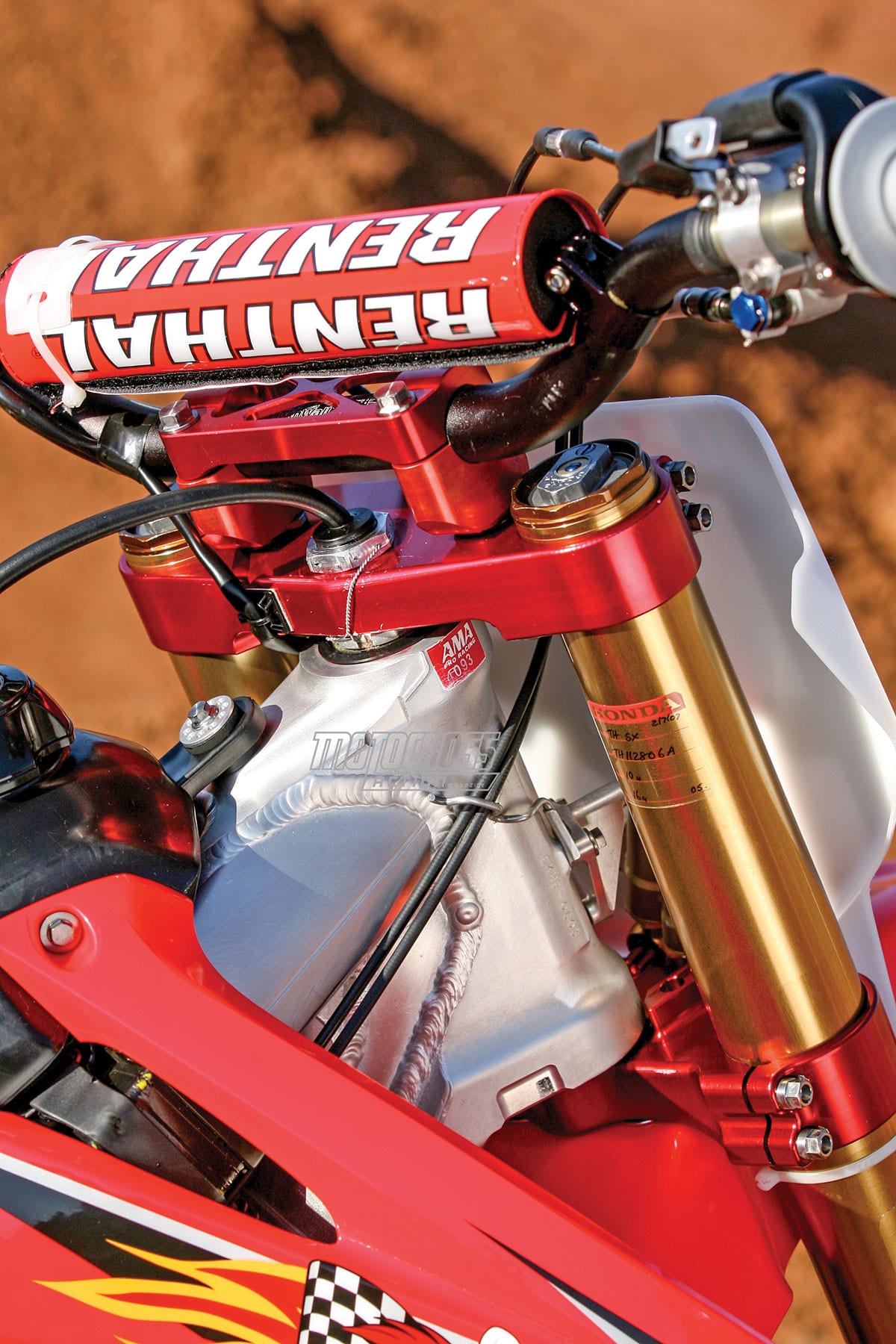
Engine. Tommy Hahn’s CRF250 did what a stock CRF250 couldn’t do. It was blessed with a lot of bottom-to-mid in the powerband, but it didn’t stop there. It had an inexhaustible amount of top-end and over-rev. How is such a thing possible in a world where motocross bikes rarely have such depth and range? The ignition, cam, valve springs and porting took over where the stock engine left off.
THE HARDER WE RODE TOMMY HAHN’S CRF250, THE BETTER THE BIKE WORKED, WHICH IS COMMON FOR EVERY FACTORY BIKE WE HAVE EVER TRIED.
Honda also changed the internal gear ratios to make second through fifth gears closer together. While first gear was left alone, the closed-up gap between second and third was noticeable to riders used to the big gap on the stock CRF250 transmission. With better spacing, the works CRF250 was easier to ride from gear to gear.
If there was one part that we wanted to steal from Honda’s works CRF250, it was the magnesium Keihin carburetor. This unobtainable part was instrumental in giving the works bike a crisp feel while eradicating the dreaded CRF250 bog. If only the stock Honda came with jetting this sharp, the whole world would be a better place.
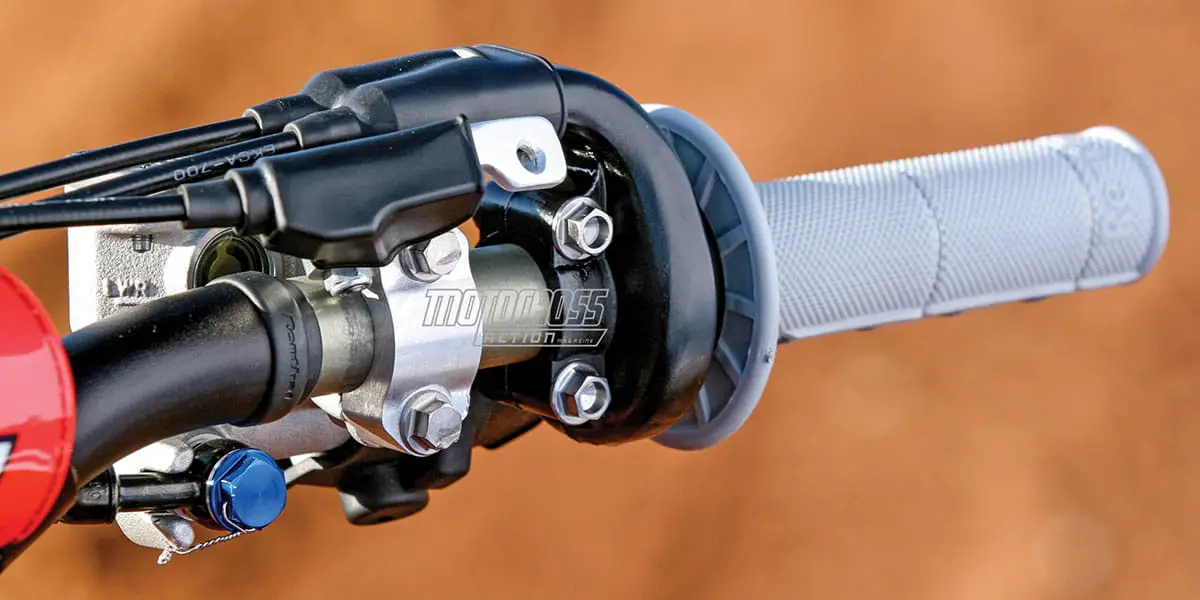
Suspension. Typical Supercross suspension is stiff. And when we say “stiff,” we mean that a sumo wrestler could case a triple and the forks and shock would barely move. We were delighted to discover that Tommy Hahn went softer on his suspension than most Supercross racers. By no means was his bike under sprung or designed for an outdoor track, but it worked perfectly on a Supercross track. The forks and shock were very well balanced, and they refused to blow through their stroke. Additionally, they were stable in the corners but firm on the jumps and through the whoops.
The harder we rode Tommy Hahn’s CRF250, the better the bike worked, which is common for every factory bike that we have ever tested. The big difference between Hahn’s and most other factory bikes is that almost any skill level, from beginner to AMA Pro, would enjoy spending time on Tommy’s bike. We would be remiss if we didn’t mention that Tommy’s setup was fairly orthodox. He doesn’t have low-rider bars, sky-high levers or weird pedal placement. He is right in the pocket where most riders exist.
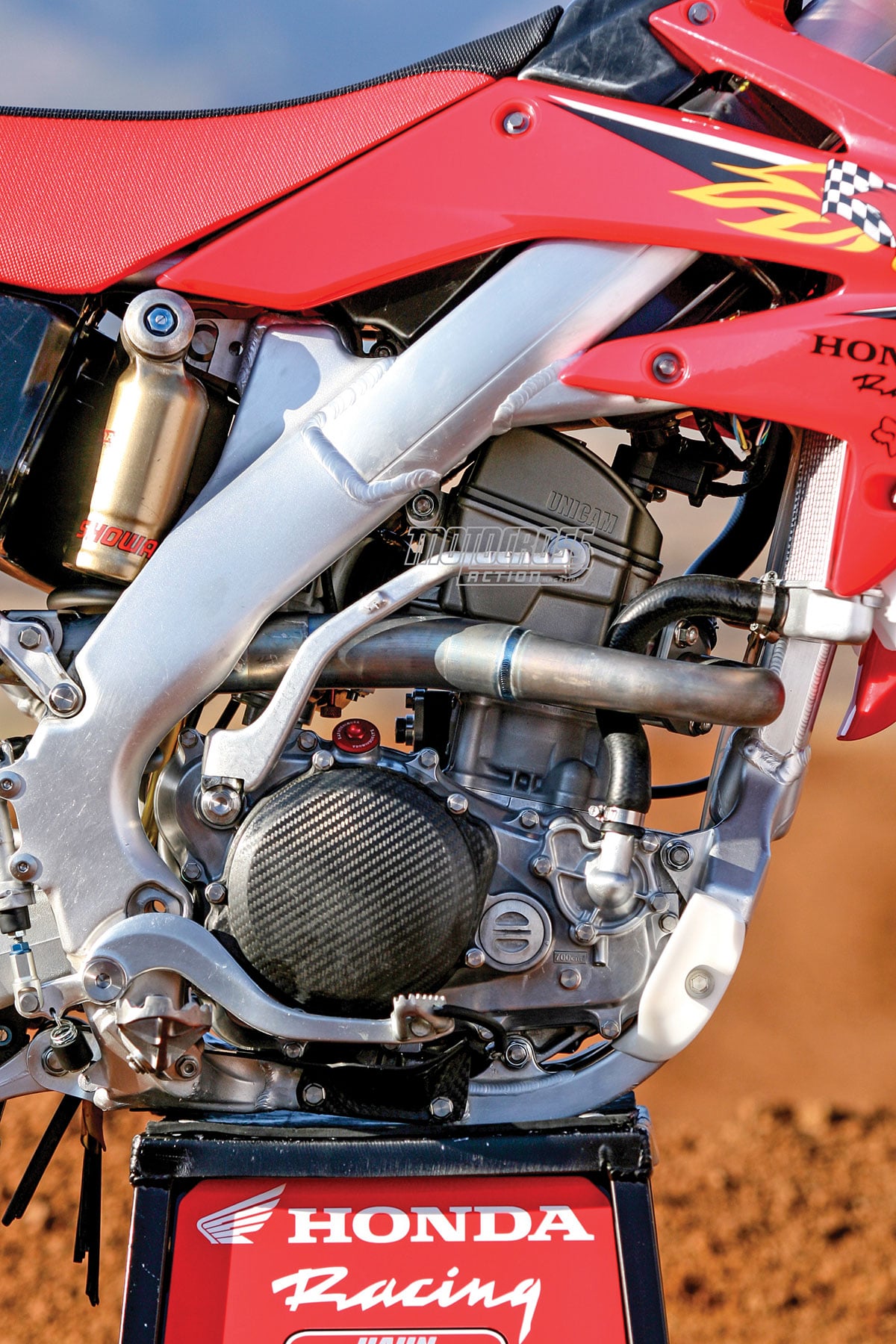
Steering stabilizer. For years Honda has tried to be hush-hush about its secret Showa steering stabilizer. It is tucked discreetly behind the front number plate (and that number plate never comes off if there is a camera around). Like most people who spend time on the AMA circuit, the MXA wrecking crew was well aware of the existence of the steering damper (it was first used when Ricky Carmichael raced for Honda). While riding, we immediately noticed its impact. It kept the front end from wandering off line through the whoops and lessened the steering effort in tight corners.
To sum up Tommy Hahn’s works CRF250, we would describe it as the ultimate expression of what the Honda CRF250 production bike could be with enough money and man hours. It didn’t have any of the flaws in the engine, gearbox or suspension departments. The dynamite powerband, from bottom to top, is something to behold.


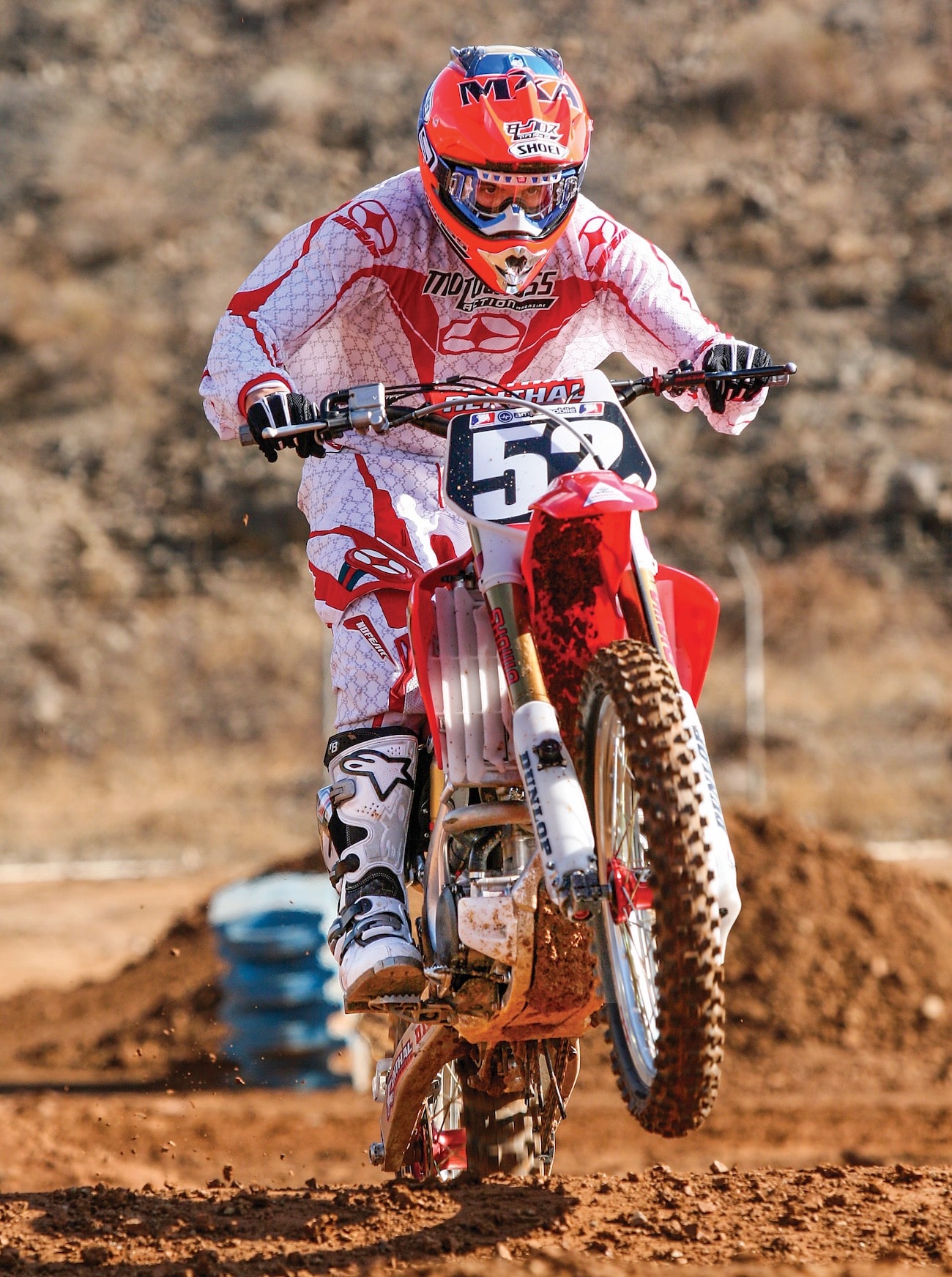





Comments are closed.